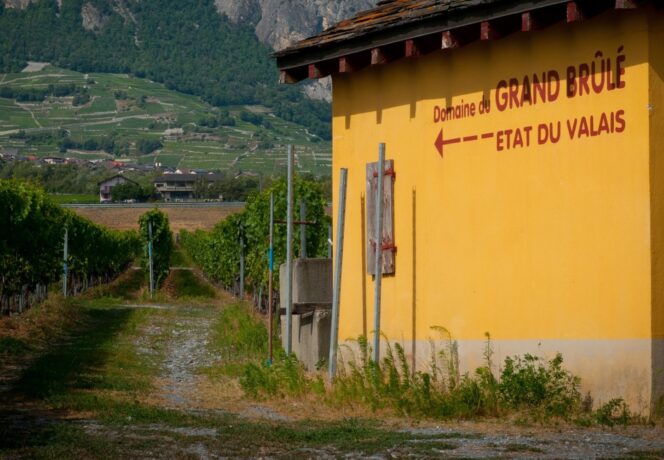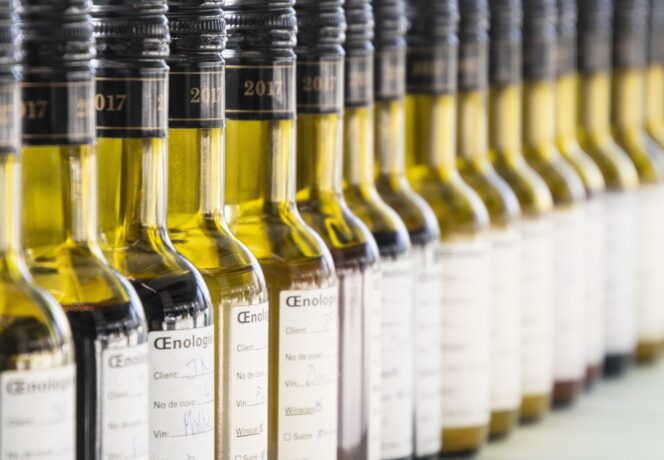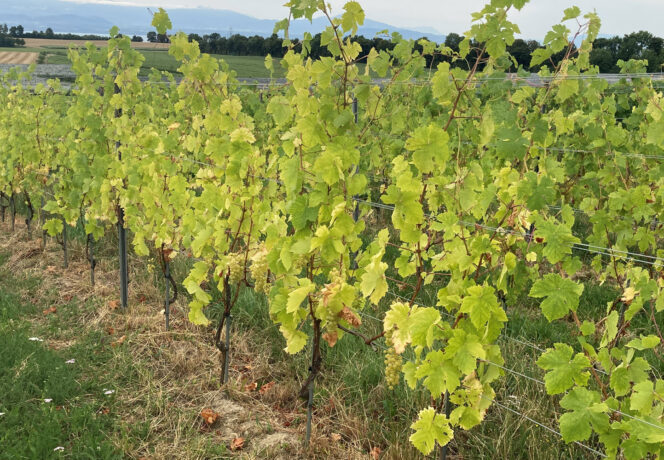Cornalin du Valais Orphaned Once Again
Photo: Spring Jean-Laurent
A study led by Agroscope has deepened our understanding of the genetic mechanisms responsible for grape skin colour. New findings have led to a revision of the genealogy of the Rouge du Pays cultivar (Cornalin du Valais) and contributed to a better understanding of the genetic diversity of the grapevine.
The red colouration of plant tissue is mainly caused by a class of pigments called anthocyanins. In the grapevine, the presence or absence of these pigments in the skin determines the colour of the berry. This colour is a key criterion in ampelography (the study of grapevine varieties) which enables thousands of different cultivars to be classified in two main categories: those with white grapes and those with red grapes (black).
Berry colour is determined genetically by a major locus; in other words, a specific location on the grapevine genome. The main gene involved in this mechanism is called MybA1; inactivation of this gene causes the absence of pigmentation in white cultivars. Each gene occupies a precise position on a chromosome and can exist in several different forms, called alleles. Each cultivar has two variants (alleles) of each gene, one from each parent.
An allele of the MybA1 gene is considered functional if it enables the synthesis of anthocyanins, and non-functional if it does not. The black skin pigmentation is a dominant characteristic, whereas the white colour is recessive.
The SUB allele is present in the red cultivars of Valais and the Aosta Valley …
This study focusses on a specific allele of the MybA1 gene called SUB because it has some unusual characteristics. It is expressed in both red and white cultivars, which raises questions about its capacity to activate anthocyanin synthesis. In addition, the role of this allele is still poorly understood. Indeed, classic genetic models are unable to predict berry colour when this allele is present.
As part of this study, the SUB allele was identified in several red grape cultivars originating from Valais and the Aosta Valley (Val d’Aoste) (Figure 1). These cultivars belong to a group of closely related genotypes. Early ampelographers had noted similarities between certain Valaisian and Valdotian cultivars at the start of the 20th century. In 2003, genetic analysis suggested that Rouge du Pays (Cornalin du Valais) was the product of a natural crossing between Petit Rouge and Mayolet, two red cultivars from the Aosta Valley. However, our results invalidate this hypothesis definitively. Rouge du Pays carries two red alleles for the MybA1 gene (SUB and ALF), excluding the possibility that it originated from two parents that carry only SUB and ITA, as is the case with Petit Rouge and Mayolet.
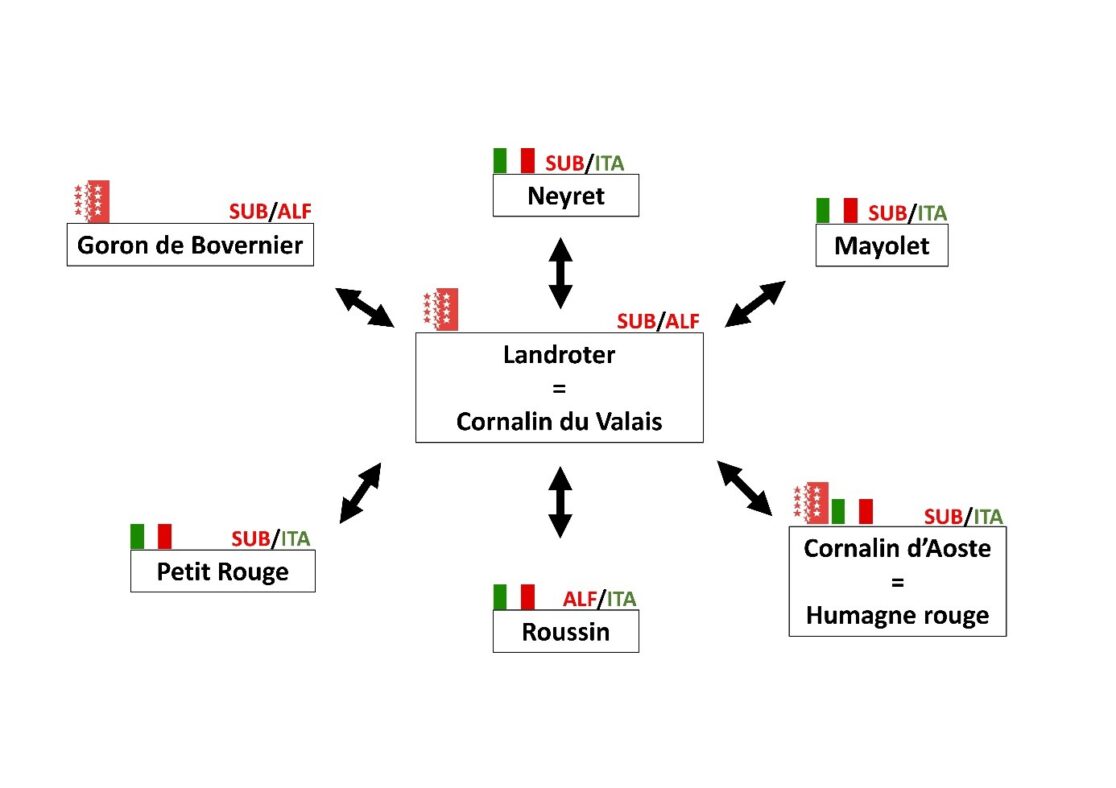
… as well as some white cultivars
The cultivars grown today are the result of a domestication process from Vitis sylvestris – the wild ancestor of the cultivated grapevine, which has black-skinned berries. Although white cultivars have been known since antiquity, until now it was thought they were the result of a single mutation. However, our results suggest the presence of a second mechanism involving the SUB allele, found in several white cultivars such as Sultanina, Khusaine Belyi and Otcha Bala (Figure 2). The mechanism highlighted in our study now completes the genetic model controlling berry pigmentation in the grapevine.
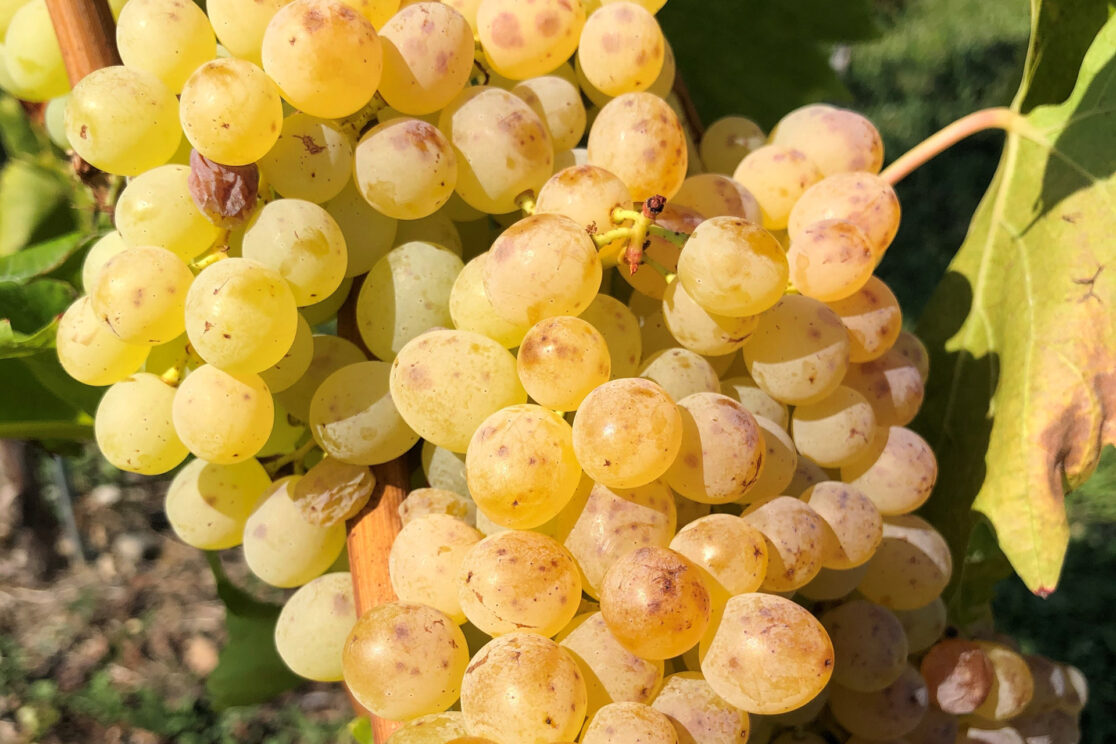
Conclusions
- Rouge du Pays (or Cornalin du Valais) is not the product of a natural crossing between Petit Rouge and Mayolet, as previously thought.
- Ampelography shows that no known combination of cultivars has yet explained the origin of Rouge du Pays.
- At least one of its parents remains unknown, probably an ancient cultivar that has since disappeared.
Bibliographical reference
A divergent haplotype with a large deletion at the berry color locus causes a white-skinned phenotype in grapevine.

